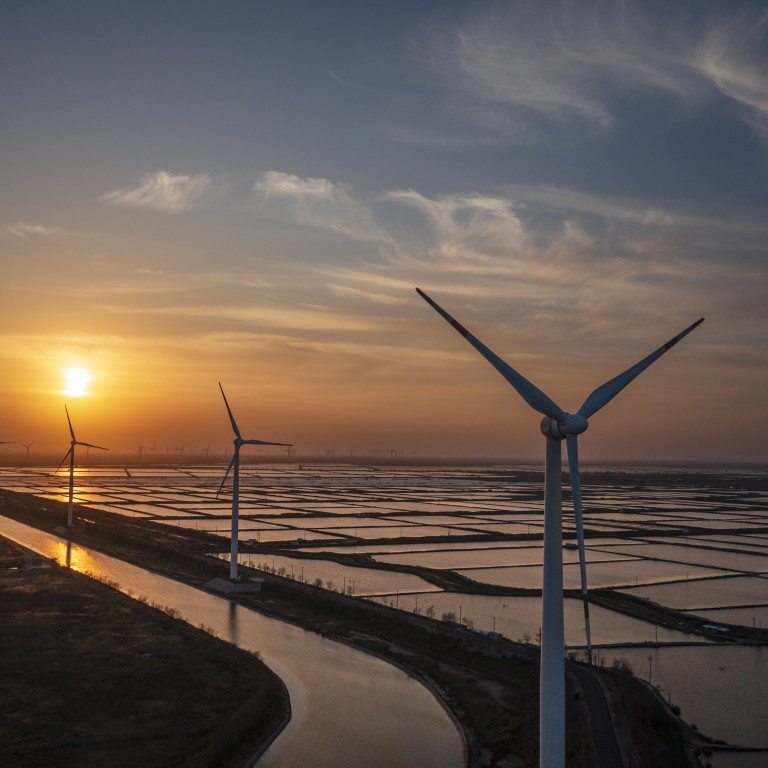
China sends ‘modest’ climate pledge to Glasgow for COP26
- Disappointed observers find no new announcements in China’s updated commitment, leaving them wanting more
- World needs ‘giant leaps’ in 2030 ambitions from all major emitters if net zero target is to be met, they say
The previous goal to increase China’s share of non-fossil fuels in primary energy consumption has been raised from 20 per cent to 25 per cent. China also aims to reduce carbon intensity – measured as emissions per unit of GDP – by 65 per cent on 2005 levels, another 5 per cent increase on its 2016 pledge.
“China’s decision casts a shadow on the global climate effort. In light of the domestic economic uncertainties, the country appears hesitant to embrace stronger near-term targets, and this represents a missed opportunity to demonstrate ambition,” said Li Shuo, senior policy adviser for Greenpeace East Asia.
“The planet can’t afford this being the last word. Beijing needs to come up with stronger implementation plans to ensure an emission peak before 2025,” he said.
COP26: developed nations should meet climate finance pledges, China says
Helen Mountford, the vice-president for climate and economics at the World Resources Institute, also said China needed to strengthen its new near-term targets and measures to get on a pathway to reach its 2060 carbon neutrality goal.
“It was very encouraging that China recently pledged to stop building coal plants abroad, but the country also needs to take more actions domestically to rein in greenhouse gas emissions this decade,” she said.
“If the world is going to have any chance of coming to grips with the climate crisis, China – as well as other major emitters – needs to graduate from taking small steps to giant leaps toward a cleaner and safer future.”
When the Paris Agreement was adopted in 2015, countries agreed to submit updated NDCs at least every five years, following a “global stocktake” process to access progress towards the agreement’s long-term goals. Though parties are legally obligated to have an NDC and to pursue measures to achieve it, the achievement of the NDC is not a legally binding commitment.
A UN report released on Tuesday shows that countries’ current commitments are inconsistent with the target of net-zero emissions by the middle of this century. Its analysis of updated pledges and other commitments made for 2030 but not yet officially submitted found they put the planet on track for a temperature rise of at least 2.7 degrees Celsius this century.
“President Xi has chosen not to attend these summits. He’s chosen not to leave China at all in calendar year 2021 to see any leader. That’s of course his choice,” US National Security Adviser Jake Sullivan said at a press briefing on Wednesday.
“President Biden does believe it’s important that he have the opportunity to have a face-to-face engagement with Xi Jinping,” Sullivan said, in a thinly veiled swipe at the Chinese leader.

